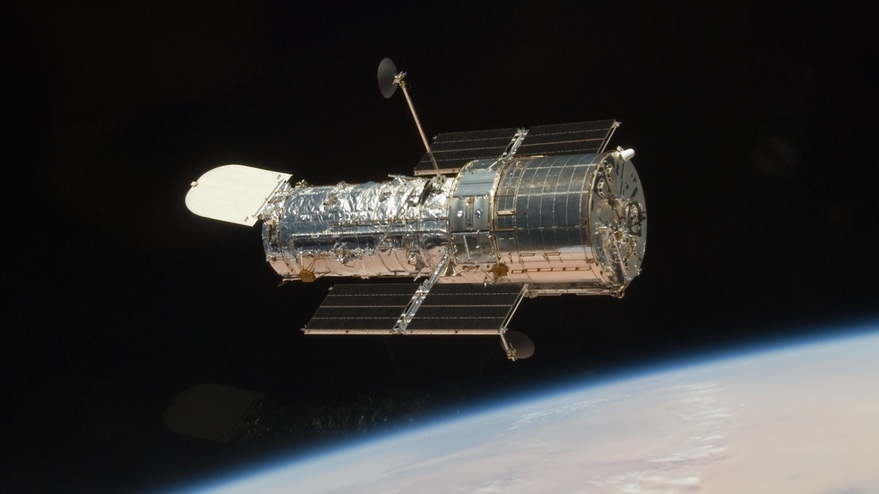White House Nixes Hubble Space Telescope Servicing Funds for 2006SpaceNews Editor January 25, 2005 [SN]
WASHINGTON — The White House has eliminated funding for a mission to service the Hubble Space Telescope from its 2006 budget request and directed NASA to focus solely on deorbiting the popular spacecraft at the end of its life, according to government and industry sources.
NASA is debating when and how to announce the change of plans. Sources told Space News that outgoing NASA Administrator Sean O’Keefe likely will make the announcement Feb. 7 during the public presentation of the U.S. space agency’s 2006 budget request.
https://spacenews.com/white-house-nixes-hubble-space-telescope-servicing-funds-2006/Using Hubble, researchers accidentally discover ejected black hole forcing star creationwritten by Haygen Warren April 24, 2023 [NSH]
Throughout the universe, supermassive black holes can typically be found at the center of massive galaxies that stretch tens of light years across. However, using Hubble, a team of researchers has discovered a supermassive black hole that appears to have been ejected from its galaxy. The black hole, which is around 20 million times more massive than our Sun, is traveling incredibly fast — so fast that it could travel the distance between Earth and the Moon in just 14 minutes.
What’s more, as the black hole travels through space it is plowing into gas ahead of it. As the black hole compresses the gas, star formation is triggered, and new hot blue stars are created — leaving a 200,000 light-year-long trail of stars behind the black hole. The trail of stars is very bright as it likely houses an extremely high amount of young stars, with the trail’s brightness being nearly half as bright as the black hole’s host galaxy. Nothing like this has ever been observed by scientists, and Hubble’s observations are helping scientists understand the characteristics of black holes and how they affect their surrounding environments.
https://www.nasaspaceflight.com/2023/04/runaway-black-hole/Hubble glitch renews talk about private servicing missionJeff Foust December 2, 2023 [SN]
 NASA's Hubble Space Telescope, seen here after the final shuttle servicing mission in 2009. Credit: NASA
NASA's Hubble Space Telescope, seen here after the final shuttle servicing mission in 2009. Credit: NASAWASHINGTON — A problem with the Hubble Space Telescope has renewed discussion about whether and how NASA might approve a private mission to reboost and potentially repair the spacecraft. (...)
NASA announced Nov. 29 that Hubble was in a safe mode because of a problem with one of its three operational gyroscopes. That gyro first triggered a safe mode Nov. 19 when it provided what NASA described as faulty readings. Spacecraft controllers restored operations of Hubble, only to see problems again Nov. 21 and 23. (...)
The study, performed under an unfunded Space Act Agreement, was completed earlier this year, but neither NASA nor SpaceX have provided any details about the results of the study or next steps.
Isaacman, in other social media posts, suggested the study concluded a reboost and servicing mission was feasible: “this should be an easy risk/reward decision.” However, he did not disclose details about how the mission would be conducted. (...)
https://spacenews.com/hubble-glitch-renews-talk-about-private-servicing-mission/